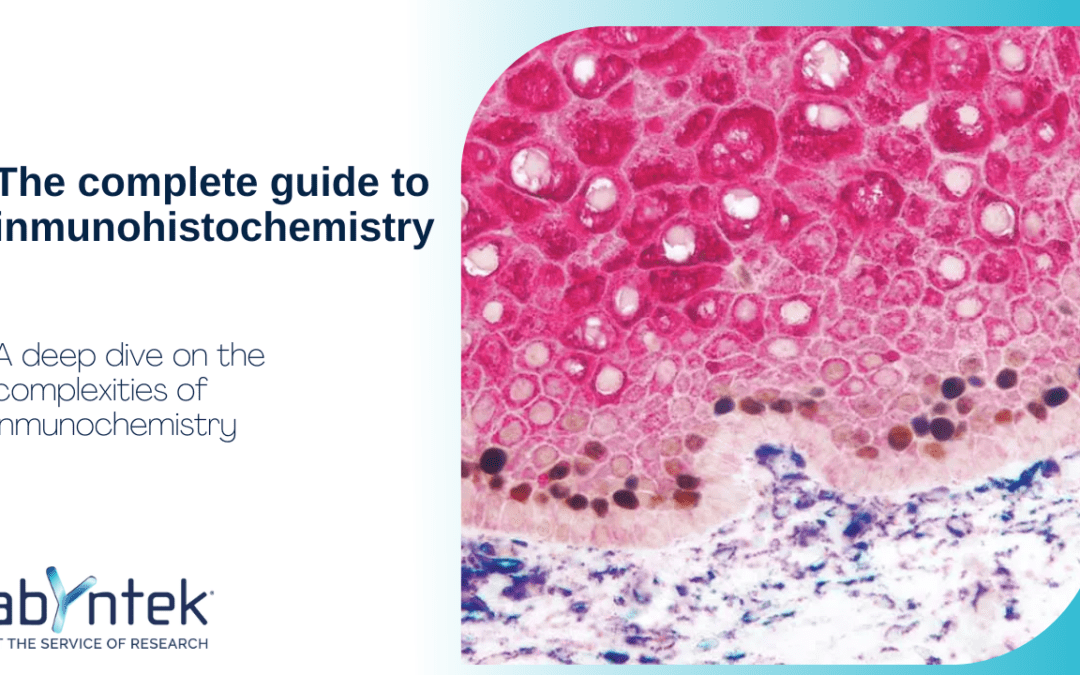This whitepaper is a complete guide to immunohistochemistry, exploring in great detail the state of the art in this field. This guide provides a starting point for those researchers who are taking their first steps on immunohistochemistry, and at the same time acts as a chance for the more veteran ones to keep up to date with the latest developments in the field.
Immunohistochemistry (IHC) and immunocytochemistry (ICC) are powerful techniques that use the antibody-antigen affinity to detect antigens (proteins). Antibody-based applications rely on the specific binding of antibodies to the target epitope to generate accurate expression data. Antibodies specifically recognize the epitope of interest through intermolecular forces including hydrophobic interactions, ionic interactions, hydrogen bonding, and others.
Both techniques, provide specific semi-quantitative data about target protein expression, localization, and distribution. Thus, the observation of processes in the context of intact tissue is possible using any of those techniques, even though they are less sensitive quantitatively than other immunoassays, such as ELISA.
This guide contains:
- What does immunohistochemistry mean?
- Experimental design
- Sample prep and sample fixation
- Antigen retrieval
- Blocking and Detection
- Microscopy
- Quantitative image processing
- Controls
- Troubleshooting
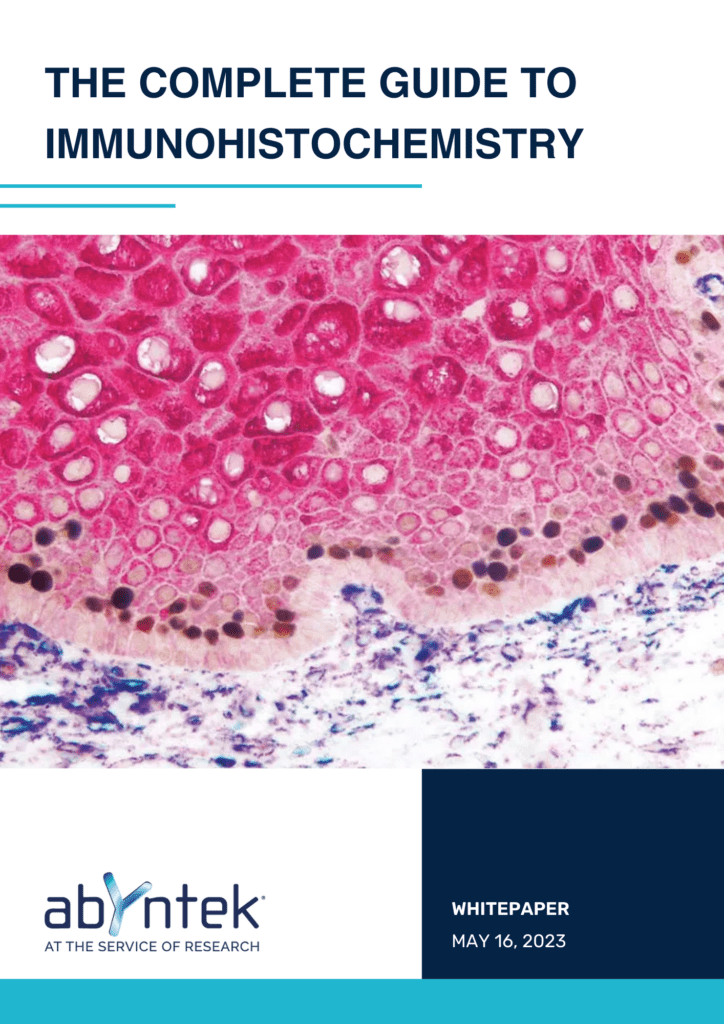
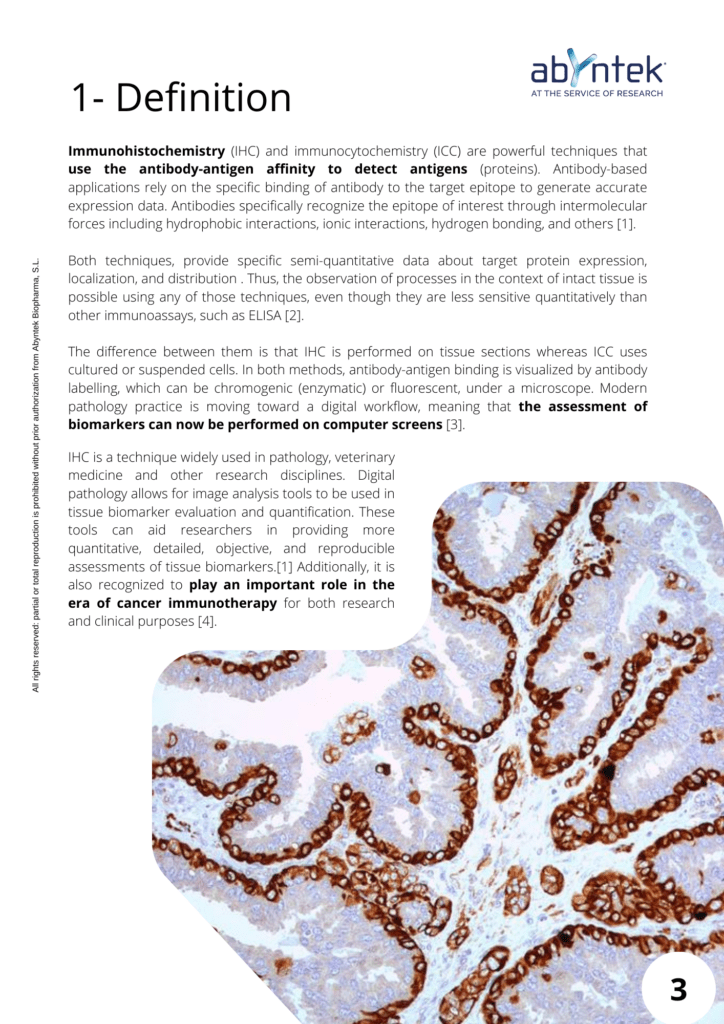
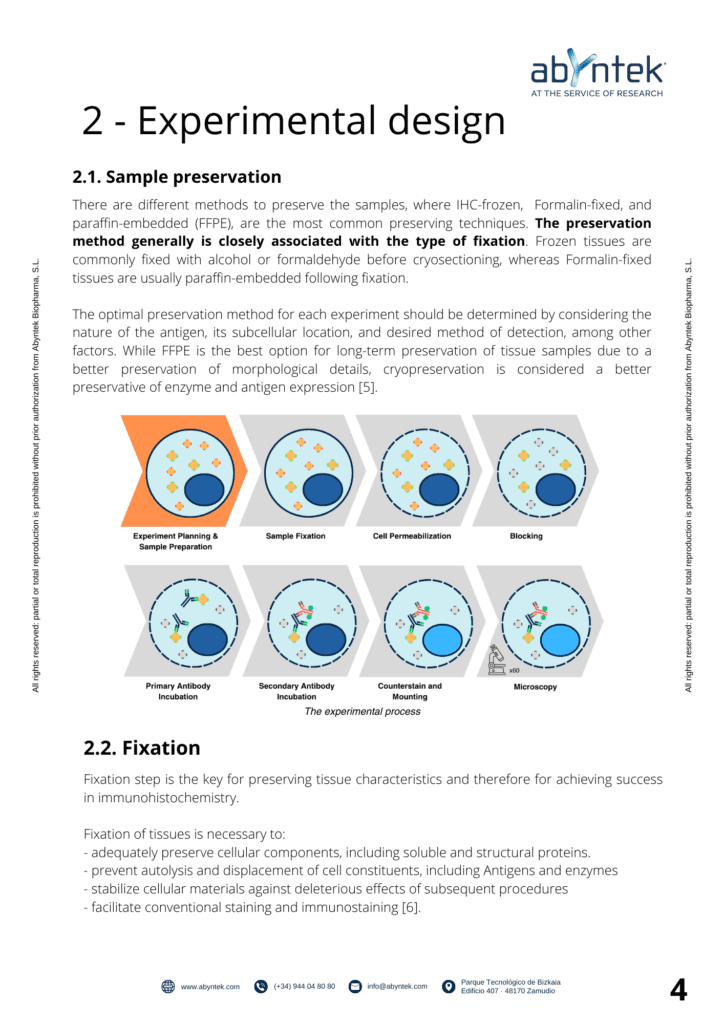
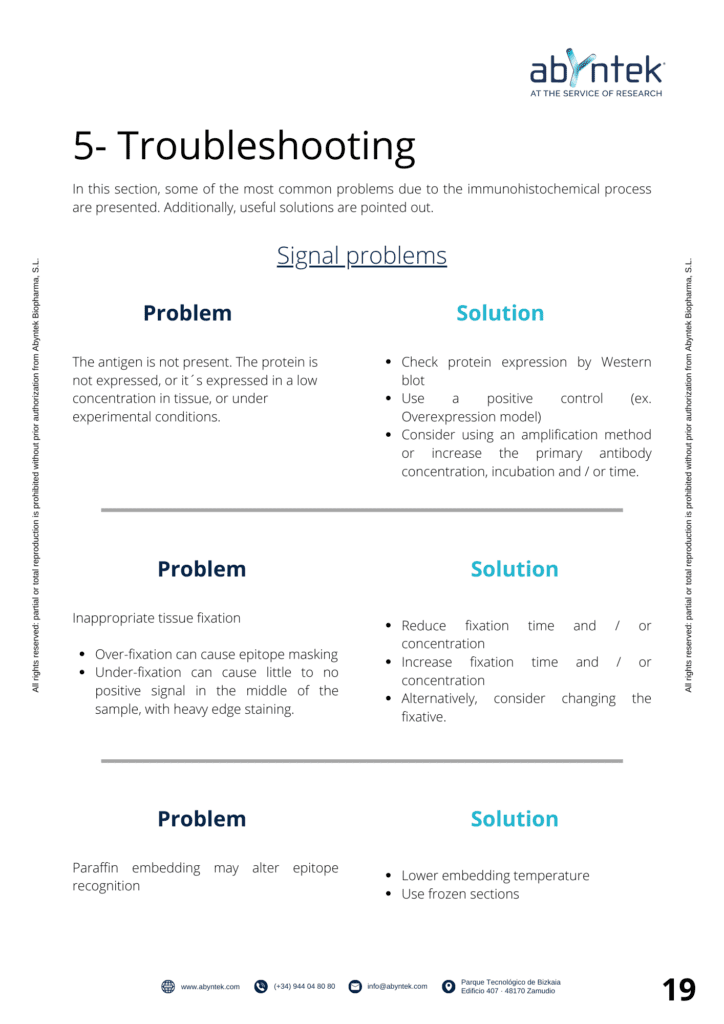
Related content
You want to know more? Here you have a series of related articles about the topic that can help expand your base of knowledge, refresh the basics or help with doubts.
Types of Immunoassays
Choosing an antigen: Peptide or protein
About Abyntek
At Abyntek Biopharma we have more than 15 years of experience giving the best possible service to researchers. That’s why we put all our know-how and experience both into helping researchers to find the perfect reagent for their research. And why we have put all the experience of our scientific team to create support documents such as these to guide and help researchers in their day-to-day.

